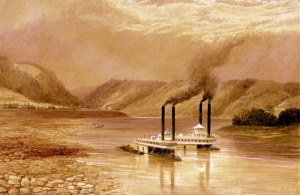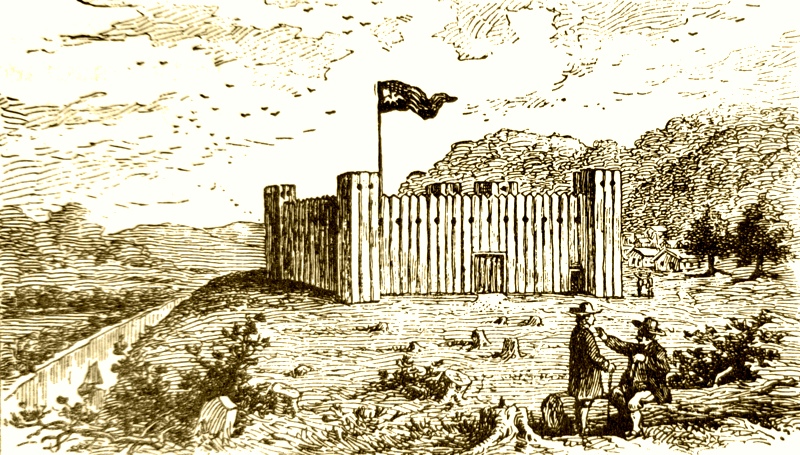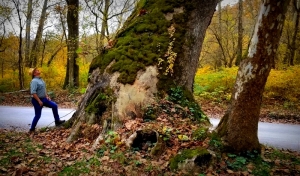Thanks to the Internet, almanacs aren't printed as they once were, but in West Virginia, where communications were hampered by the mountains, these useful guides were vital to farmers and all who depended on their brand of calendared information.
Wheeling, in what's now the northern panhandle of West Virginia, was a principal source of printed almanacs, a benefit to isolated farmsteads in the Mountain State, though, at the junction of the Ohio River and the National Road, it was an ideal focus for distribution to farmers in the northeast and the developing Midwest.
A specialist in publishing similar information in a periodic form, the late Jim Comstock, editor of the West Virginia Hillbilly, was a student of the early almanacs and published in his West Virginia Heritage Encyclopedia an overview of their histories.
"The almanac was an indispensable part of life for early West Virginians," Comstock wrote. "It contained a calendar, told what the weather was going to be, listed the phases of the moon, told when the high courts would sit, told how far apart important cities were, and was full of vital information for farmers and housewives.
"There was also enough humor to keep it from being dull reading. With the exception of the Bible, the almanac was the most important, and perhaps the only volume in the library of the typical early settler. It has been noted that Daniel Boone, who once represented Kanawha County in the Virginia Legislature, owned but four books, and an almanac was one of them."
During the 19th century, many almanacs were given away as promotional devices by patent-medicine companies. One of these was Barker's Almanac, which included much verbiage extolling the curative properties of Barker's Nerve and Bone Oil.
"The book was a favorite with young people because of its puzzle pictures, in which the figures of animals, birds, men, and women were concealed. They afforded numerous hours of entertainment," Comstock wrote.
"It also contained the usual picture of the signs of the zodiac encircling the figure of a man, showing his vital organs and the relationship between the organs and the signs as well as the lore which one would expect a good almanac to contain."
Other almanacs favored by West Virginians were Irl R. Hicks Almanac, Grubers' Hagerstown Town & Country Almanac, Hostetter's Illustrated United States Almanac, The Old Farmer's Almanac, and Bristol's Free Almanac, perhaps the first published by a patent-medicine company, according to Comstock.
"Many almanacs were published in Wheeling," he wrote, "and it is believed that the first of these was The Farmers' Almanac for the Year of Our Lord, 1820, prepared by a Philadelphia printer for Sheldon Potter and Company's bookstore."
"In 1822, William Davis and James F. McCarty moved their printing business from Philadelphia to Wheeling and there began anew, printing Davis & McCarty's Agricultural Almanac for the Year 1823 and Davis & McCarty's Magazine Almanac for the Year 1823, No. 1, among many other publications."
The first almanac printed in what would become the U.S. was probably William Pierce's 1639 An Almanac Calculated for New England. The first published in the Ohio Valley probably originated in Pittsburgh in 1804 under Zadok Cramer, Comstock suggested.
"Cramer gave his magazine flavor as a means of meeting competition. In addition to the usual fare, he included historical, literary, and other miscellaneous material—a policy followed by subsequent almanac publishers."
Davis and McCarty probably discontinued their magazine almanac after one issue, but their regular almanac was published until 1827, under Davis's name after 1826, as the partnership had been dissolved, Comstock said.
"The following year, Davis moved to Ohio, where he published the Ohio Magazine Almanac for several years. Davis's successor was John Fisher, who also published an almanac, as well as the western edition of Noah Webster's Elementary Spelling Book. His almanac was called Fisher's Farmers and Mechanics Almanac and was first issued in 1834. It lasted ten years, although, after 1840, the Fishers were not associated with it, and the publishing was done by the firm of Robb and Stephenson.
Many of the Wheeling almanacs had mathematical calculations for the signs and the phases of the moon prepared by John Armstrong.
"Little is known of him, except what is included on title pages," Comstock says of that mystery. " "Early almanacs described him as a 'teacher of mathematics' and noted that he was 'of Pittsburgh.' In later editions, he was said to be a 'Professor of Mathematics in Franklin College, Ohio.'
Armstrong may have lived in Wheeling for a time but prepared almanac calculations for various publications in Pittsburgh and Ohio as well as Wheeling.
The first almanac published in Charleston was probably the Agricultural Almanac for the Year of our Lord, 1830, printed under the name of James M. Laidley and Co., though it was probably printed elsewhere, Comstock proposed.
Wheeling in the 1820s was proposed as new U.S. capital

There was a time when Wheeling was being proposed as the location for a new capital of the U.S. At the junction of the Ohio River and the National Road, and nearer the heart of the expanding new nation, the flourishing city to some seemed ideally suited. At least two writers in the 1820s proposed that Wheeling would make a better capital than Washington, D.C. Read the full story here.
Sign up to receive of FREE copy of West Virginia Explorer Magazine in your email weekly. Sign me up!



